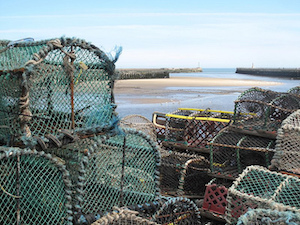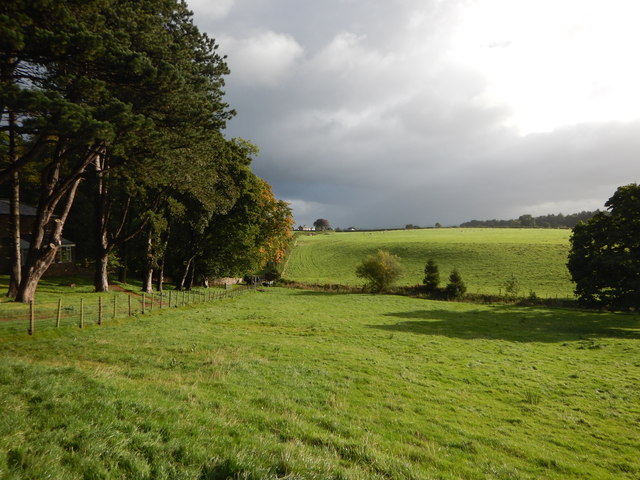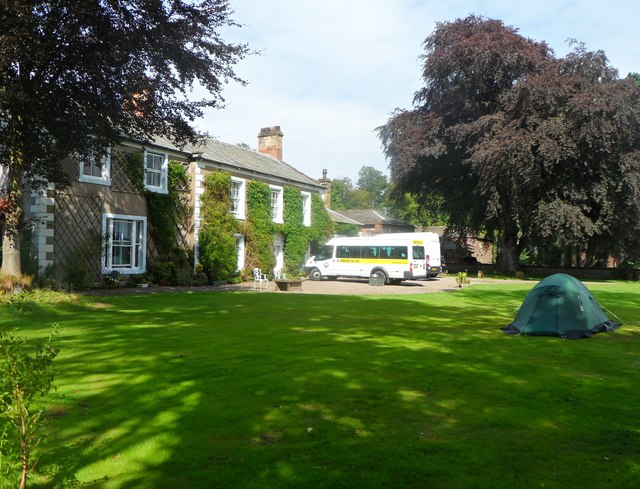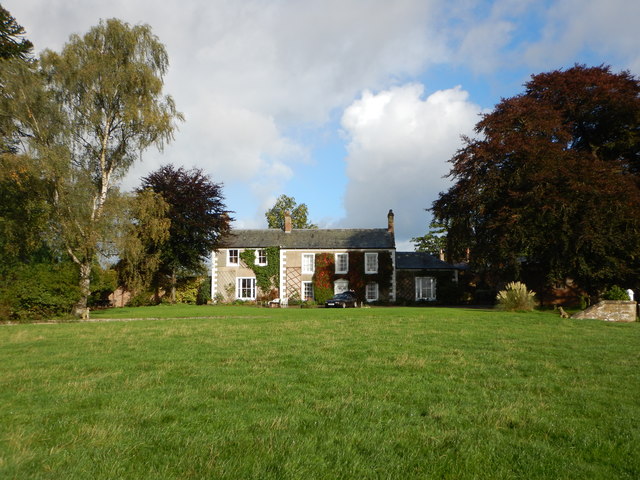Topics > Northumberland > Amble > Amble - description from 1825
Amble - description from 1825
Extract from Eneas Mackenzie (1825).
Amble is seated upon an abrupt eminence a short distance south of Glosterhill. It commands an extensive view of the sea coast and Warkworth Castle with the rising grounds beyond it form a pleasing landscape. From the advantageous situation of this village near the mouth of the Coquet it must have been a place of consequence in the remotest times. The foundations of buildings formed of undrest stones and built in a circular form without mortar in the manner of the ancient Britons have been discovered here and the Roman coins that have been found tend to prove that it was also occupied by that warlike people. Mr John Shanks of this place while forming an embankment from the sea discovered an ancient causeway about one foot below the surface of the earth 2 feet broad strongly paved and running in a straight direction from Amble to the old bed of the Coquet from which it would appear that this river has often changed its course. The traces of habitations still discernible here attest its former consequence. From many of the stones being defaced with fire it is probable that at some period this village has been burnt. Here was formerly a monastry subordinate to the priory of Tynemouth and which establishment has enjoyed great privileges in both Amble and Hauxley. There is still a custom of paying 33 bolls of bigg annually on the 13th of February before the walls of the monastry. This religious house is now in ruins and also the chapel but in the latter a man did penance for fornication so late as the year 1765. Adjoining the north wall of the monastry a very large quantity of human bones were lately found. They were deposited upon a thin layer of red clay and covered with a large stone without any inscription. The manor of Amble with its valuable coal mines have since the Reformation belonged to different proprietors. The Earl of Derwentwater held lands here by mortgage deed from a family of the name of Lewins. Afterwards several noblemen had grants of estates here from the crown for life but they were made freeholds in the time of the late Lord Newborough. The extensive farms of Amble Hope House and Low Hall with the rabbit warren and the entire royalty of Amble are still held by Lady Newborough. TG Smith Esq of Togston holds a valuable estate here and another belongs to Mrs Taylor a widow lady Isaac Cookson jun Esq of Newcastle also possesses a considerable tract of land which was formerly the property of his father in law the late Mr Cook of Togston. The Errington family has also had land here as there are several ridges still known by the name of Errington's lands.
Reference:
Eneas Mackenzie. An Historical, Topographical, and Descriptive View of the County of Northumberland, and of Those Parts of the County of Durham Situated North of the River Tyne, with Berwick Upon Tweed, and Brief Notices of Celebrated Places on the Scottish Border. Mackenzie and Dent, Berwick-upon-Tweed, 1825.
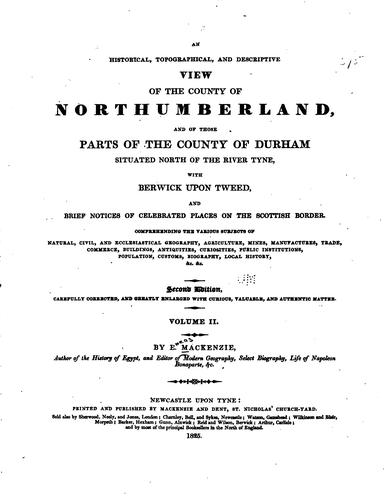
from https://openlibrary.org/works…
An historical, topographical, and descriptive view of the county of Northumberland. (Eneas Mackenzie, 1825)
- Digitised version of An historical, topographical, and descriptive view of the county of Northumberland and of those parts of the county of Durham situated north of the river Tyne, with …
Added by
Simon Cotterill


from https://openlibrary.org/works…
An historical, topographical, and descriptive view of the county of Northumberland. (Eneas Mackenzie, 1825)
- Digitised version of An historical, topographical, and descriptive view of the county of Northumberland and of those parts of the county of Durham situated north of the river Tyne, with …
Added by
Simon Cotterill

